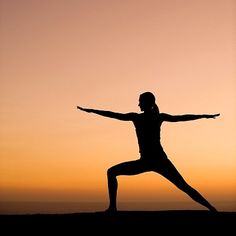 What exactly is a warrior? The warrior lifestyle is not only about defending yourself and those you love, it involves integrity, character, and living a life of honor.
What exactly is a warrior? The warrior lifestyle is not only about defending yourself and those you love, it involves integrity, character, and living a life of honor.
Being a true warrior involves balance.
Warrior pose is one of the most common yoga poses practiced in Hatha yoga due to its ability to strengthen most major muscle groups all at once. What’s often overlooked are the mental benefits of the pose. When sustaining warrior one for a significant amount of time, it becomes necessary to release unnecessary tension and find ease within a challenging pose.
In today’s yoga class, I was struck by the instructor’s repeated suggestion “to find stability in the pose” and to go slow in order “keep the integrity of each pose.”
What does this have to do with leadership?
We can learn a lot of lessons through warrior pose; how does one release unnecessary tension, find ease and get stability in order to be a good leader? When we have a lot on our shoulders as leaders, do we respond by tightening our grip (micromanaging), or by finding ease wherever we can (delegating)? Do we befriend our challenges by bringing a sense of curiosity to those we struggle with, or do we block them out and give them the cold shoulder? Do we take pain or discomfort personally, or do we simply jump into problem-solving mode instead?
It is never easy to be a good leader but it is far easier when one has a solid team and there is a lack of significant pressure or tension. Introduce the employee that triggers you or your pushes your buttons and it’s a different story. See:
-
The employee who challenges your authority
-
The employee who is disengaged and lacks motivation
-
The employee who seems to have a problem with you (but for the life of you, you cannot pinpoint a good reason)
Find stability as a leader. It so critical to know what and who pushes your buttons and to find solid ground before you unconsciously impose those things onto your team.
There are as many different types of leaders as there are people.
How we take on leadership roles depends on many things but I’ll focus on two at the moment:
what types of leaders our role models were
+
how we feel about power relationships
Depending on how our parents modeled leadership and how they used their own power as parents, we may naturally mirror their leadership styles, or unconsciously rebel against them, doing the complete opposite. There is a third (and healthier) option that most of us are unaware of, and that is to become aware of how our parents led us, to determine what was helpful and what was not, and then to choose consciously how we want to lead others.
Here are some questions you can ask yourself to gain a clearer picture of where your leadership tendencies are coming from, and can hopefully inspire more conscious and deliberate choices.
-
How do I feel about power relationships?
-
Do I enjoy power? Or do I feel guilt when I have it?
-
Do I love myself enough that I can admit when I’ve made a mistake?
-
Am I ok with being vulnerable?
-
Can I have fun and encourage openness and creativity?
-
Do I take my time and move through the day bringing integrity to each relationship, meeting and task?
-
Am I comfortable giving compliments? Constructive feedback?
-
What are my goals as a leader?
Answering these important questions will give you a great start towards consciously choosing who you want to be as a leader. It will make all the difference for you and your team.
For more information on women and their career leadership style, check out


